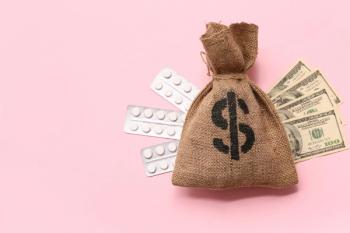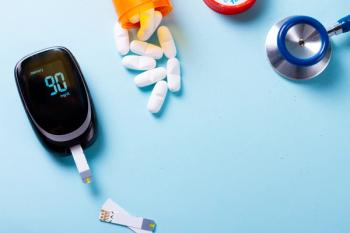
Q&A: Pharmacists’ Understanding of CKD Therapies, Adverse Effects | ASHP Midyear
Denise Kelley, PharmD, BCPS, FASHP, joined Drug Topics to discuss various medications for chronic kidney disease and their common adverse reactions.
At the American Society of Health-System Pharmacists 2024 Midyear Clinical Meeting and Exhibition, held December 8 to 12 in New Orleans, Louisiana, Denise Kelley, PharmD, BCPS, FASHP, gave a presentation focused on the pharmacotherapies available for treating chronic kidney disease. After her presentation, Kelley caught up with Drug Topics to discuss the pharmacist’s role in counseling patients with CKD and how they can best manage their disease progression.
“Now that we have all of these benefits of SGLT2 inhibitors that we're seeing, I think it's important that, if a patient does struggle with urinary tract infections, that may be attributed to the SGLT2 inhibitor,” she said. “[It’s] trying to have that conversation of shared decision making, weighing the risk versus benefits of staying on the drug versus those risks associated.”
Read on to learn more about a health-system pharmacist’s perspective on newly approved drugs like non-steroidal mineralocorticoid receptor antagonists (ns-MRAs) and sodium-glucose cotransporter-2 (SGLT2) inhibitors.
Drug Topics: What are some of the key considerations for choosing a therapy to slow the progression of CKD?
Kelley: KDIGO (Kidney Disease Improving Global Outcomes) guidelines would recommend that any patient with CKD, whether they have diabetes or not, whether they have heart failure or not, should really be started on an SGLT2 inhibitor. Specifically, canagliflozin (Invokana) has been FDA approved for diabetic kidney disease. Empagliflozin (Jardiance) and dapagliflozin (Farxiga) have been approved for [CKD] in general. So as long as the [estimated glomerular filtration rate] (eGFR) is greater than 20, these therapies should be started. We know that the earlier these get initiated, the better, in terms of slowing CKD progression, and really should be continued up until the patient might end up needing kidney replacement therapy, as long as the patient's able to tolerate [it].
Beyond this drug class, finerenone (Kerendia) is a novel medication, [an] ns-MRA. It can also be considered for addition in patients who have an eGFR greater than 25 and they're still having albuminuria despite being on a stable ACE inhibitor or ARB. We don't have a whole lot of data yet of patients who have been on finerenone while also on SGLT2 inhibitors, but that's likely to come in the pipeline, as far as how those 2 may work together. And then lastly, while this next drug hasn't been FDA approved for slowing CKD progression yet, there's been some emerging data with semaglutide (Ozempic, Wegovy, and Rybelsus) having a benefit in patients who have CKD with diabetes.
Drug Topics: Are there any crucial adverse effects or drug interactions that pharmacists should be aware of with SGLT2i, ns-MRNA, or GLP-1 therapies?
Kelley: There are no specific crucial drug-drug interactions I would think of with these, but there are several particular adverse effects that I think pharmacists should know. Starting with SGLT2 inhibitor class first, these have been associated with an increased incidence of genitourinary infections, mycotic infections. While the risk, or the incidence, we've seen is typically less than 10%, they can still occur. That's something for pharmacists to educate patients about and be aware of that association. Now that we have all of these benefits of SGLT2 inhibitors that we're seeing, I think it's important that, if a patient does struggle with urinary tract infections, that may be attributed to the SGLT2 inhibitor. [It’s] trying to have that conversation of shared decision making, weighing the risk versus benefits of staying on the drug versus those risks associated.
Aside from that, another side effect that is even lower incidence, but is still important to know with SGLT2 inhibitors, is euglycemic diabetic ketoacidosis. It's important for all health care providers to be aware that this can happen and be aware of how to identify it and manage it. Beyond that drug class, finerenone doesn't have tremendous side effects, but one to be mindful of is hyperkalemia—which is a problem with that medication or could be a problem. And then with semaglutide, probably the biggest side effects that pharmacists might need to be aware of is really directly related to its mechanism. By delaying gastric emptying, it can lead to some of those side effects, like pancreatitis, nausea, vomiting, things of that nature that pharmacists should be mindful of when managing these therapies.
All the while, these are important to know, but it is worth being aware that, when compared with placebo, these drug therapies were tolerated similarly. So, it's not like there were higher number of adverse events with the active treatment arms in the studies that we've seen so far.
Follow along with our coverage of the
Newsletter
Pharmacy practice is always changing. Stay ahead of the curve with the Drug Topics newsletter and get the latest drug information, industry trends, and patient care tips.

























































































































































